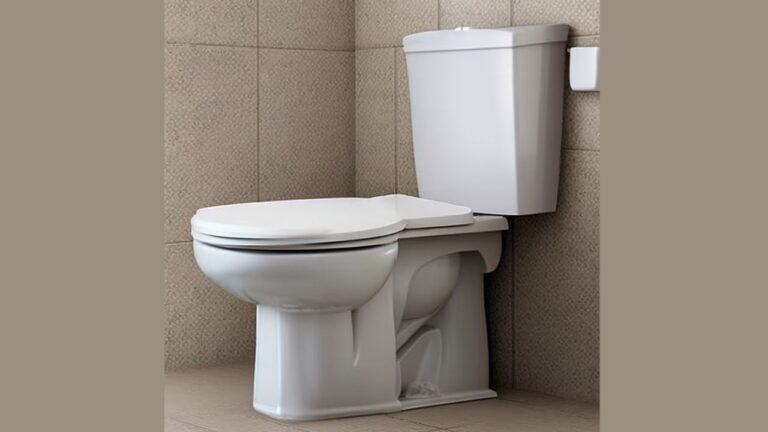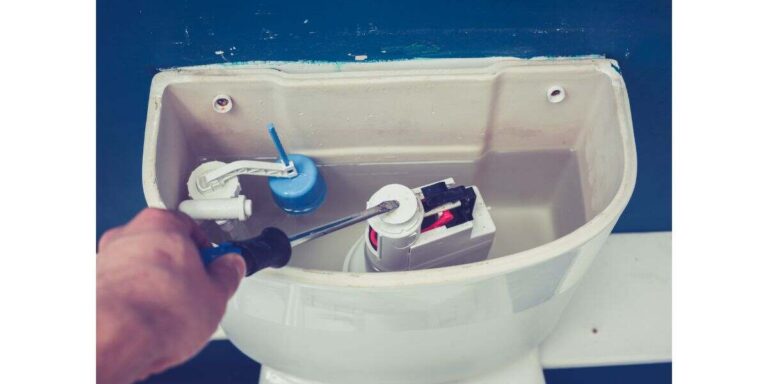Many homeowners have a question regarding plumbing: whether a washer or toilet can share the same drain.
The answer is more complex than one might think.
This article will dive deep into plumbing to respond comprehensively to this question.
- Can a Washer and Toilet Share the Same Drain?
- Understanding How Plumbing Systems Work
- Factors That Influence Sharing a Drain
- Plumbing System Modifications
- The Benefits and Drawbacks of Shared Drains
- Design Considerations
- Location of Appliances
- The Importance of Proper Installation
- How to Install a Plumbing System that Shares a Drain
- Conclusion
Can a Washer and Toilet Share the Same Drain?
Yes, a washer and a toilet can share the same drain, but some important considerations must be remembered.
The key to success lies in proper installation and design.
Understanding How Plumbing Systems Work
To understand the impact of sharing a drain for a washer and toilet, it’s essential to understand how plumbing systems work.
A typical plumbing system consists of various components, including pipes, vents, and traps, all working together to manage wastewater and maintain proper water pressure and flow rates.
The wastewater drain is essential to the plumbing system, carrying waste and other materials away from home.
The vent system, connected to the drain, ensures that air can flow through the pipes and that wastewater can move freely.
Without proper venting, wastewater can become trapped, leading to clogs and other issues.
Factors That Influence Sharing a Drain
Several factors influence whether sharing a drain for a washer and toilet is safe and legal.
One of the most important is local plumbing codes and regulations.
Specific regulations in many areas dictate the type of plumbing system components used and how to install them.
The age and condition of the plumbing system are also critical factors to consider.
Older systems may require equipping to handle the increased demand from shared drains, while those in poor condition are more susceptible to leaks, clogs, and other issues.
Plumbing System Modifications
If you’re considering sharing a drain for a washer and toilet, it’s essential to make the necessary plumbing system modifications to ensure safe and legal implementation.
This may include the installation of a “Y” connector, proper sizing and installation of the connector, and proper venting of the plumbing system.
Handling potential issues is also an important consideration.
Use safe detergents and products to prevent wastewater backup, and perform regular maintenance and cleaning to avoid clogs and other issues.
Improper installation of a shared drain can lead to water damage, sewage backups, and potential health hazards.
The Benefits and Drawbacks of Shared Drains
Properly installed shared drains can provide several benefits, including convenience and cost savings.
When implemented correctly, shared drains can save homeowners money on plumbing modifications and provide a streamlined solution for managing wastewater.
However, shared drains also have their drawbacks. They can impact water flow and pressure and require regular maintenance and cleaning to prevent clogs and backups.
Also, shared drains may only be legal in some areas and can be unsafe if not installed correctly.
Design Considerations
The plumbing system’s design plays a critical role in determining whether a washer and toilet can share the same drain.
When designing a system, it is essential to consider the pipes’ type, size, and the appliances’ location.
Pipes
The type of pipes used in the plumbing system is essential when installing a washer and toilet on the same drain.
PVC pipes are popular because they are durable, lightweight, and easy to install.
Copper pipes are another option worth considering because they are more corrosion-resistant and can handle higher water pressures.
Size of Pipes
The size of the pipes used in the plumbing system is another critical factor when installing a washer and toilet on the same drain.
The diameter of the pipes should be adequate to handle the water flow from both appliances.
Typically, a minimum of two-inch pipes is suggested to handle the volume of wastewater from a washer and toilet.
Location of Appliances
The location of the appliances is another important consideration when installing a washer and toilet on the same drain.
The appliances should be located near the main drain to minimize the length of the pipes and reduce the risk of clogs.
The Importance of Proper Installation
Correct plumbing installation is crucial when a washer and toilet share the same drain.
Incorrect installation can result in various issues, such as clogs, backups, and damage to the plumbing system.
One of the most common problems that can arise when a washer and toilet share the same drain is a clog.
It can occur if the drain needs to be more significant to handle the water volume produced by the washer and toilet.
It is essential to ensure that the drain is large enough to handle the water flow from both appliances to avoid any potential clogs.
How to Install a Plumbing System that Shares a Drain
Hire a professional plumber for the proper installation of shared drain plumbing.
The plumber will be able to assess the plumbing system and determine whether it is suitable for a shared drain.
In most cases, the plumber will install a “Y” connector on the main drain line to connect the toilet and washer drains to the same pipe.
It allows the wastewater to flow into the same drain line without causing backups or other issues.
P-Trap
One of the essential components to consider when installing a washer and toilet on the same drain is the P-trap.
The P-trap is a U-shaped pipe to prevent sewer gas from entering the home.
It is essential to ensure that the P-trap is installed correctly and is of the correct size to prevent clogs.
Venting
Venting is another critical consideration when installing a washer and toilet on the same drain.
The plumbing system should adequately ventilate to prevent airlocks and allow proper drainage.
Improper venting can lead to clogs, slow drainage, and even sewage backup.
Conclusion
The washer and toilet can share the same drain with proper installation and design considerations.
It is essential to consider the type and size of pipes used, the location of the appliances, and the proper installation of the P-trap and venting.
By considering these considerations, homeowners can enjoy the convenience and practicality of having a washer and toilet on the same drain without encountering any plumbing issues.


